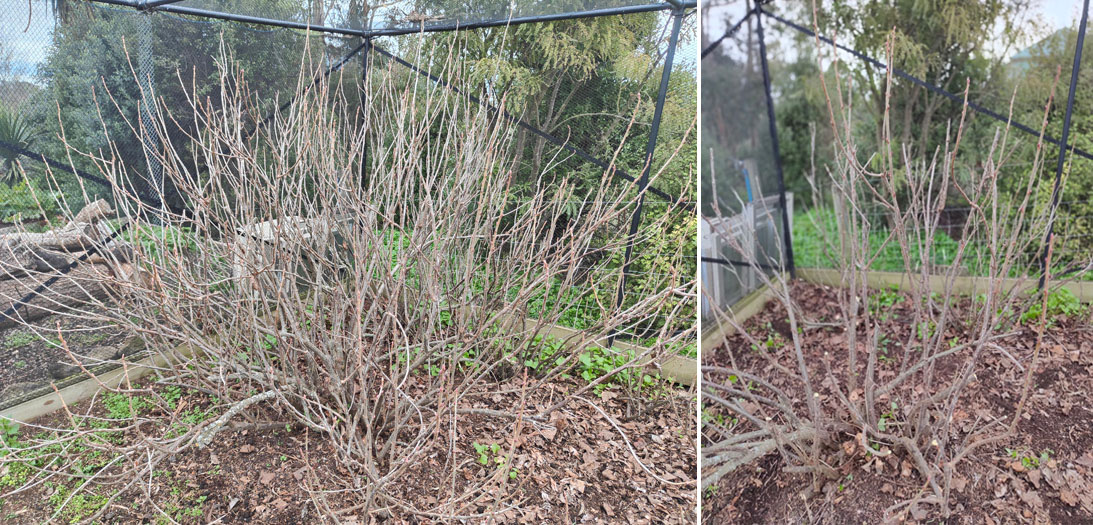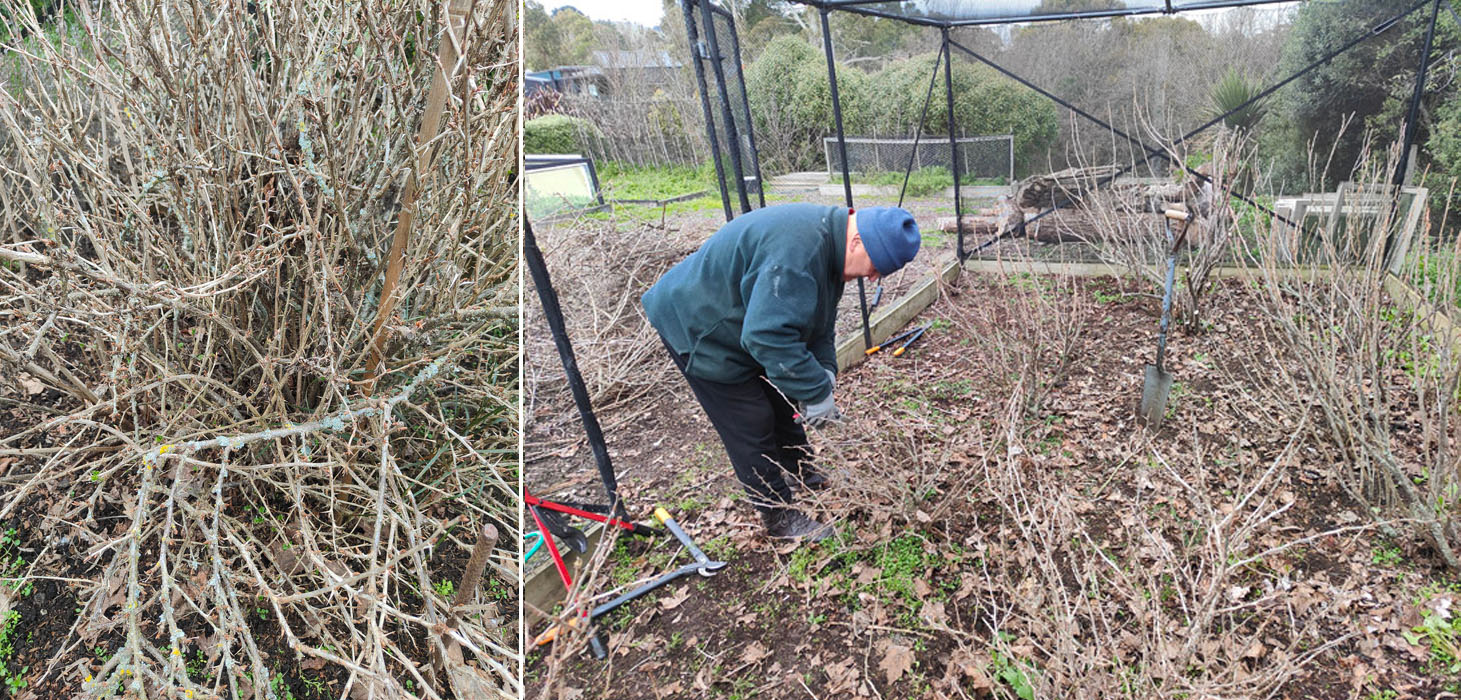Blackcurrants pruning
Oh… good old Ribes nigrum! It’s one of our favourite fruits – Juuls makes pretty mean jam out of those dark berries. You can eat them raw off the plant, but honestly… jam is the way to go as far as I’m concerned.
They hail from the temperate areas of Central and Northern Europe and Asia – yep, they can deal with frosts.
Blackcurrants are usually grown as multi-stemmed plants, with an open structure of 6–10 upright stems growing from the base.
Established bushes (aged four years or older) are best pruned every winter to keep them fruiting strongly. This is a simple process – cut out up to a third of the oldest stems down at the base, create some space in the middle. The younger stems will then rise up to produce fruit for the next few years.
Red Currants pruning is slightly different from Blackcurrants.
From late winter to early spring – prune all forms of red and white currants annually while the plants are still dormant, before any signs of growth appear.
Red and white currants will fruit at the base of shoots, these are known as 'laterals', that grow out from the main branches, especially the younger branches!
Young = new, narrower and lighter-coloured stems; old = thicker and darker stems
Prune in winter to leave between eight and ten healthy, strong main branches each year. On one-year-old bushes, prune back new shoots by half. Leave the branch with an outward-facing bud at the top.
Some folk grow them as “cordons”: a bit like climbers, up a wire structure in the form of one or two main branches. The side-shoots that come off those main stems will carry the red currents.
In mid-summer – prune cordons and fans to restrict growth and maintain their shape.
Gooseberries pruning
Just as a warning: they are prickly rascals – wear good gloves!
First of all: get rid of dead branches – cut them off as low as you can.
Cut out the really old branches (especially more than 5 years old) and open the inside up a bit (not too much, mind you). But if you haven’t pruned your gooseberries for a long time, they may need a bit more surgery to open that bush up again.
Old branches are thick and dark in colour.
Taking these old sturdy, dark branches out makes the plant grow new juvenile growth that will do the job for the next few years.
The idea is to replace the older stuff with newer (much more productive) growth.
The younger branches (lighter in colour and thinner) can be cut back a bit (from the top) to get the plant to set up new spurs, which will produce new fruit.
The whole idea is to create a nice series of fruiting areas in the inside of the plant; not too high but certainly accessible when you want to harvest the berries.
Late winter is a good time to fertilise the berries with some general fertiliser, followed by a hand-full of Sulphate of Potash to remind the plants that it’s time to think of flowers and setting fruit!
My good mate Mike (Scottish, a builder and handy guy to have as a friend) hadn’t done any of his pruning for quite a few years and asked me to help him out restoring the Blackcurrants and Gooseberries.
He had made a pretty “cage” in his garden to stop the birds vandalizing the berries, and it took us about two hours to get the job done.
This is what it looked like, before and after:
 Dense Blackcurrants before and after pruning.
Dense Blackcurrants before and after pruning.
 Gooseberries lethal and dense, versus Gooseberries taken apart by Mike; lots of air and space.
Gooseberries lethal and dense, versus Gooseberries taken apart by Mike; lots of air and space.
Sometimes it pays to be ruthless!
LISTEN ABOVE
Take your Radio, Podcasts and Music with you










